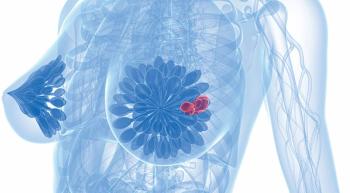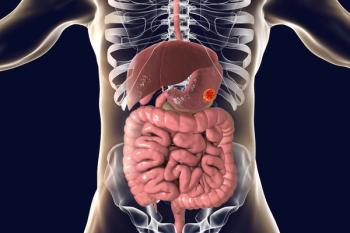
Top 8 Highlights From SABCS 2014
This slide show features some of the top highlights from the 2014 San Antonio Breast Cancer Symposium, including ovarian suppression in ER-positive breast tumors, tamoxifen for disease prevention, and immunotherapies for triple-negative breast cancer.
References:
1. Krop I, Johnston S, Mayer IA, et al. FERGI phase II study of PI3K inhibitor pictilisib (GDC-0941) plus fulvestrant vs fulvestrant plus placebo in patients with ER+, aromatase inhibitor-(AI)-resistant advanced or metastatic breast cancer–part 1 results. Presented at 2014 San Antonio Breast Cancer Symposium; December 9-13, 2014; San Antonio, Texas. Abstract S2-02.
2. Perez EA, Ballman KV, Anderson SK, et al. Stromal tumor-infiltrating lymphocytes(S-TILs): in the alliance N9831 trial S-TILs are associated with chemotherapy benefit but not associated with trastuzumab benefit. Presented at 2014 San Antonio Breast Cancer Symposium; December 9-13, 2014; San Antonio, Texas. Abstract S1-06.
3. von Minckwitz G, Reimer T, Potenberg J, et al. The phase III ICE study: Adjuvant ibandronate with or without capecitabine in elderly patients with moderate or high risk early breast cancer. Presented at 2014 San Antonio Breast Cancer Symposium; December 9-13, 2014; San Antonio, Texas. Abstract S3-04.
4. Chlebowski RT, Blackburn GL, et al. Final survival analysis from the randomized Women's Intervention Nutrition Study (WINS) evaluating dietary intervention as adjuvant breast cancer therapy. Presented at 2014 San Antonio Breast Cancer Symposium; December 9-13, 2014; San Antonio, Texas. Abstract S5-08.
5. Nanda R, Chow LQ, Dees EC, et al. A phase Ib study of pembrolizumab (MK-3475) in patients with advanced triple-negative breast cancer. Presented at 2014 San Antonio Breast Cancer Symposium; December 9-13, 2014; San Antonio, Texas. Abstract S1-09.
6. Hurvitz, S.A. et al. “Phase 3, randomized, double-blind, placebo-controlled multicenter trial of daily everolimus plus weekly trastuzumab and paclitaxel as first-line therapy in women with HER2+ advanced breast cancer: BOLERO-1” SABCS Abstract S6-01
7. Cuzick J, Sestak I, Cawthorn S, et al. 16 year long-term follow-up of the IBIS-I breast cancer prevention trial. Presented at 2014 San Antonio Breast Cancer Symposium; December 9-13, 2014; San Antonio, Texas. Abstract S3-07.
8. Francis PA, Regan MM, Fleming GF, et al. Randomized comparison of adjuvant tamoxifen (T) plus ovarian function suppression (OFS) versus tamoxifen in premenopausal women with hormone receptor-positive (HR+) early breast cancer (BC): Analysis of the SOFT trial. Presented at 2014 San Antonio Breast Cancer Symposium; December 9-13, 2014; San Antonio, Texas. Abstract S3-08.
Newsletter
Stay up to date on recent advances in the multidisciplinary approach to cancer.

















































































